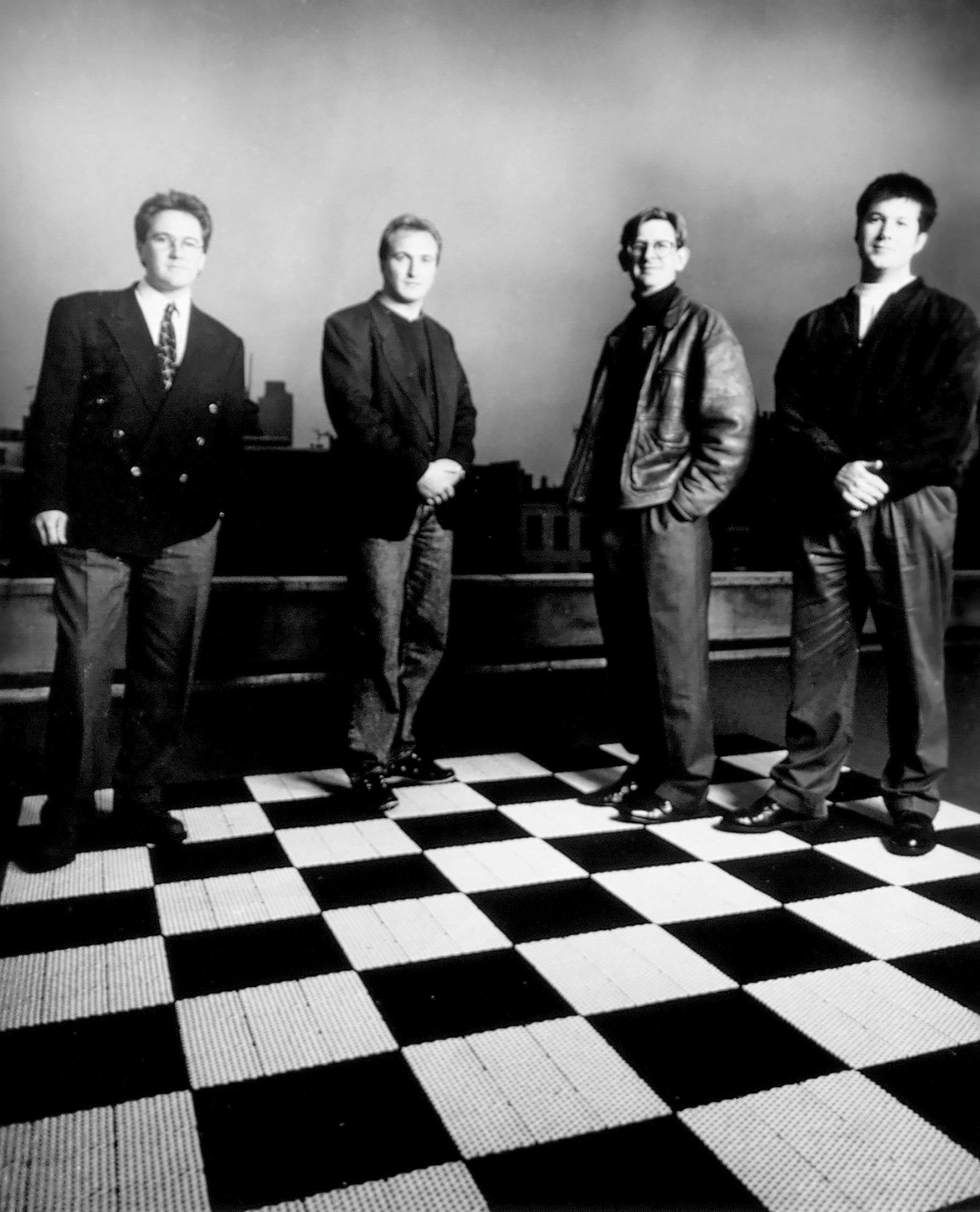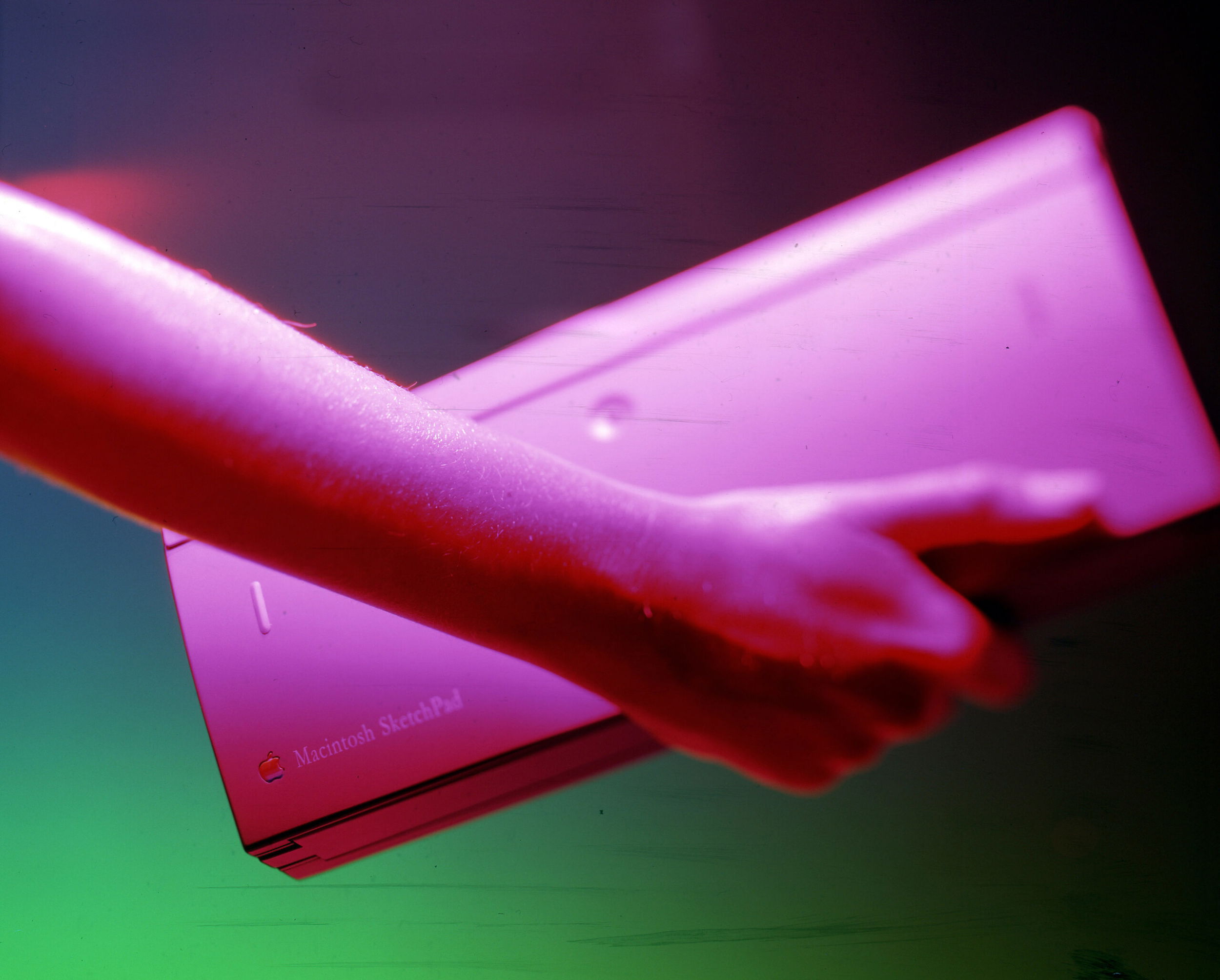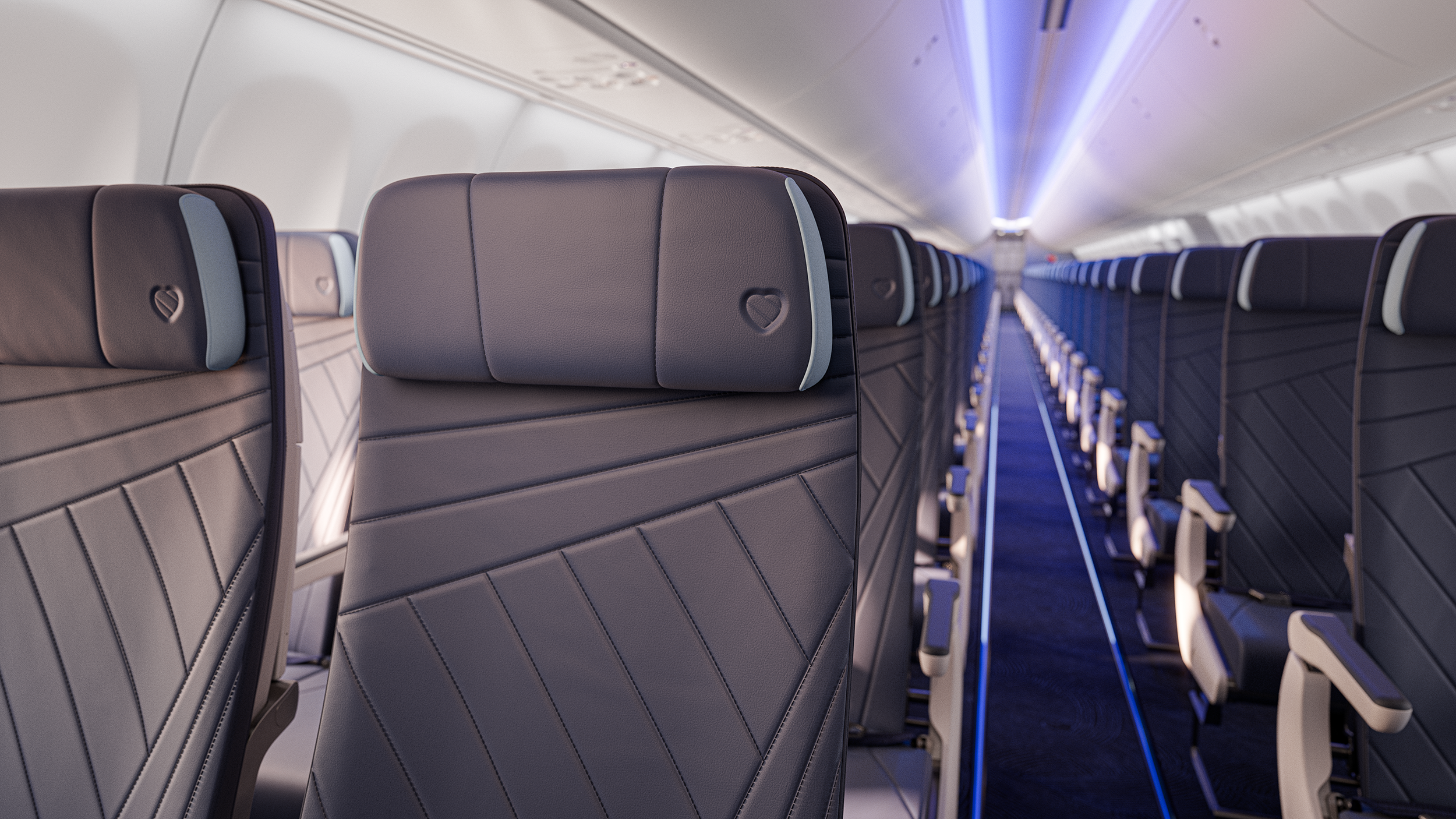A sign of the times – Martin Darbyshire on 40 years in design

tangerine’s Martin Darbyshire provides a unique insight into the changes that have taken place in the design and manufacture of goods and services over the last forty years
A lifetime of designing products, from mobile phones to airline seating, travelling the globe as board member of the International Council of Societies of Industrial Designers, has given tangerine’s Martin Darbyshire a unique insight into the changes that have taken place in the design and manufacture of goods and services over the last forty years.

Martin Darbyshire with Spacetalk Adventurer Mobile Phone Watches, 2021
Although he studied industrial design at London’s Central Saint Martins, it was a visit to the Museum of Modern Art in New York that inspired Darbyshire to be a designer that pushes the boundaries. In early the 80s MOMA was exhibiting the works of celebrated Italian designer and architect Mario Bellini, who is best known for his sleek, progressive designs in furniture and electronics. Darbyshire describes the exhibition as “transformative” and recalls how seeing a collection of wooden mock-ups of early typewriters left him with no doubt about his future aspirations.
“I think that sealed it for me,” he remembers. “That was the thing that said, ‘Yes, I really want to do something like this.’ It was an incredible exhibition, and I’ve still got the book.”

Left to right: Clive Griyner, Peter Philipps, Martin Darbyshire, Jonathan Ive
A couple of years later in 1989, Darbyshire went on to found tangerine with university classmate Clive Grinyer. They were joined two years later by Jonathan Ive and Peter Phillips, just as the company began to gain visibility. The focus of the company’s early work was on physical products such as consumer electronics, as well as on strategic projects. Early work for Apple put them on the map, with their concepts for the future of portable computing, under Project Juggernaut. But a major turning point for the business occurred in the late-1990s, when the company won a pitch to help British Airways create the world’s first flat-bed in business class.
“We had moved from the design of small-scale physical products largely for consumer markets to designing something that became more a part of an experience, more a part of a larger system that delivered significant change for the business,” he recalls.

Apple Macintosh Sketchpad Concept, 1999

The second generation of tangerine's Club World Business Class Seat for British Airways, 2006
tangerine’s diverse design projects have included everything from smart baby monitors to modular work booths, and, like Bellini, tangerine’s clients comprise some of the world’s most well-known brands. In addition to Apple and British Airways, tangerine has delivered design solutions to LG, Huawei, Sky, Cathay Pacific, Nikon, Samsung and Toyota, to name a few.
For Darbyshire, there isn’t a single answer to what makes a great design innovator, nor is there a one-size-fits-all approach to a design project.
“We as designers are about solving business problems ranging from how the business might use design and what design can do for the business through to the specific execution of something once you’ve determined what a problem or a challenge might be,” he explains.
“Design and innovation are utterly driven by context. Design is so diverse now and the kind of work we might be doing is so diverse that you need to stand back and try different things and learn from those approaches.”
According to Darbyshire, a certain level of open-mindedness is key to the design process. “Every time we take on a new project, which moves us into a different space we have to learn about it,” he says. “To some degree it’s feeling as you go, discovering as you go. Design is never linear; you are always going to be circling back to the question, it’s always iterative.”
He continues: “You always discover something really surprising that you didn’t expect, and you normally find out things that were unexpected along the way.”
An outstanding end-product, he explains, is one that “genuinely makes something better and not just different,” while fitting seamlessly into a user’s daily life.
“A very important criterion of successful design is that you don’t notice something,” he says. “It’s so right that you don’t notice it. The interaction you have with something becomes utterly intuitive. That’s when design is really working. When virtually anybody who has never had a dealing with a thing is capable of starting to use it appropriately, that to me is a very important aspect of design.”

VW Group China eVTOL, 2022
Looking to the future, Darbyshire says a fundamental shift in attitude to design is coming through Environment, Social and Governance, whose goals are starting to have a real impact on businesses. ESG refocuses the whole business on its approach to the environment in terms of emissions and energy consumption and sustainability, recycling, reuse, and a product life cycle.
A challenge for designers has always been the sheer complexity of the issues, but now things such as B CORP are giving accreditation to companies who establish high standards, across the whole of their business from accountability to complete transparency. This movement is increasingly gaining traction as the consciousness around this becomes very much in the mind of the consumer.
Significant challenges exist in many sectors, and the grand changes are more likely to come from new generations of transportation and new technologies for increasing efficiencies or decreasing emissions. But still, design has a role to play in understanding how a brand can remain attractive to consumers and yet adopt an ethos that is genuinely more sustainable.

Southwest 737 Economy Seating, 2024
In the aviation industry, a sector tangerine knows well, an interesting challenge is in the design of seats. A little-known fact is an economy class seat may weigh less than the carry-on bag that the passenger brings with them, or at least the one they check into the hold! Designers must be conscious of the things they can control and influence versus the things that fall outside their remit.
The fundamental thing for the future is asking questions around what elements can be eliminated or transformed or asking if there are new ways of doing things that lead to a significant breakthrough. Setting more aggressive weight targets on luggage or more challenging perhaps do you pay according to what you weigh? How do you incentivise people to do this, is it that you get a discount for bringing less luggage rather than paying to take more, for example?

Finnair Business Class, 2020
The new Finnair business class seat attempts to deliver comfort in a new way, but it doesn’t have a door, which is a move away from the norm that is set by the market. This norm is often driven by benchmarking from peer pressure more than thinking more broadly about what could be new, the unimagined possibilities.
The ipod and the smartphone are the unimagined products that have transformed the design industry. For too long we have been trying to redesign versions of the same thing, rather than asking more fundamental questions about ‘what could they be?’
As the buying power and political influence that Generation Alpha starts to exert over Gen Z, consumer behaviours will shift the design landscape once more, and as designers, we must move with it.